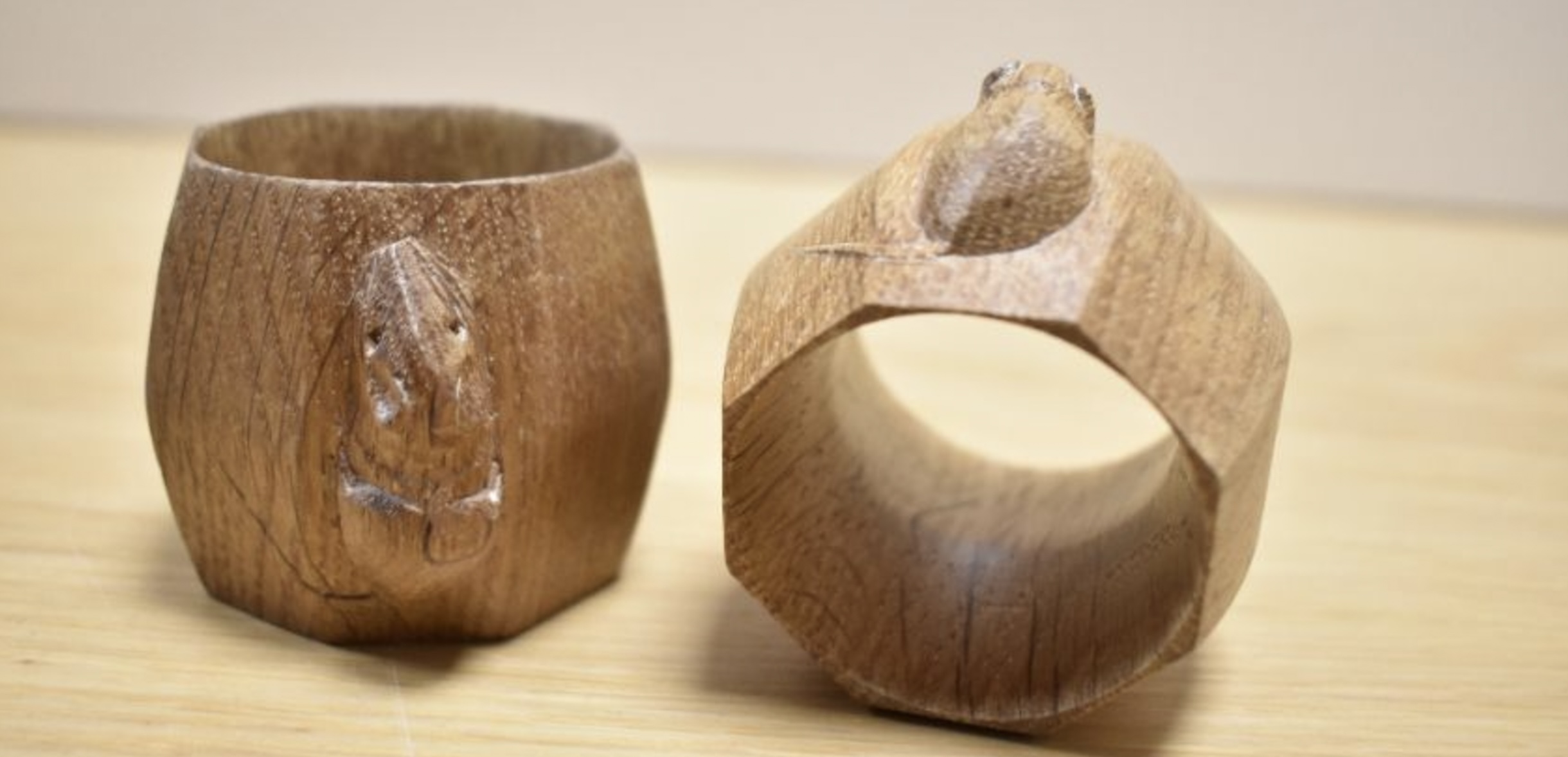Robert Thompson, famously known as ‘Mouseman’, is one of Yorkshire’s most celebrated craftsmen. Born in 1876 in Kilburn, North Yorkshire, Thompson became synonymous with the Arts and Crafts Movement through his exceptional hand-crafted oak furniture, which remains highly revered today.
His signature feature, an intricately carved mouse on every piece, has made his work instantly recognizable, symbolising his craftsmanship and the enduring legacy of Yorkshire woodworking.
The story behind the mouse.
Thompson’s introduction to the mouse motif, which gave him his famous nickname, was a happy accident. According to local legend, the idea came during a conversation in his workshop about being “as poor as a church mouse.” Inspired, Thompson carved a small mouse onto a piece of furniture, a touch that became his hallmark. This subtle yet charming design added a personal, whimsical element to each of his pieces without detracting from their simplicity and functionality. The mouse became a symbol of Thompson’s commitment to quality and individual craftsmanship, hallmarks of the Arts and Crafts philosophy, which rejected industrialisation and mass production in favour of handcrafted, unique pieces.
The Arts and Crafts Movement, which began in the late 19th century, emphasized the beauty of materials and traditional craftsmanship. Thompson embodied this ethos, focusing on durable, practical designs crafted from locally sourced oak. His furniture featured clean lines and minimal ornamentation and showcased the wood’s natural grain. He used time-honoured woodworking techniques like mortise and tenon joints, which contributed to the durability and longevity of his furniture. Thompson’s designs were functional and celebrated the materials’ inherent beauty, a key tenet of the movement.
Yorkshire craftsmen who followed in the Mouseman’s footsteps.
The success of Robert Thompson’s Mouseman furniture inspired other Yorkshire craftsmen to follow in his footsteps, creating a community of artisans known for their unique carved signatures and adherence to Arts and Crafts principles. One such craftsman was Thomas Whittaker, known as “Gnomeman” for the small gnome carvings he added to his pieces. Whittaker, like Thompson, used traditional methods and Yorkshire oak, creating sturdy, high-quality furniture with an unmistakable personal touch. His gnome carvings, often tucked away discreetly on chairs, tables, and cabinets, added an element of charm and surprise, much like Thompson’s mice. Whittaker’s work followed the same ethos of craftsmanship, rejecting the idea of mass production in favour of individuality and longevity.
Another key figure in this tradition was Peter Heap, known as “Rabbitman.” Inspired by both Thompson and Whittaker, Heap developed his own signature style by carving small rabbits into his pieces. Working from his workshop in Wetwang, near Driffield, Heap became known for his solid, handmade oak furniture that, like his predecessors, adhered to the values of simplicity, quality, and the importance of craftsmanship. His rabbit carvings, like the mice and gnomes, gave his furniture a personal touch while ensuring that each piece was a work of art in its own right.
These craftsmen, along with others in the region, were part of a larger Yorkshire tradition of blending artistry with functionality. Their work stands as a testament to the enduring influence of the Arts and Crafts Movement in the region, which celebrated handcrafting skills, the integrity of natural materials, and the rejection of industrial manufacturing processes.
Furniture made to become an heirloom.
Each craftsman developed their own distinctive style, yet they were all united by a deep respect for the oak wood they worked with and the craft traditions they preserved. Their furniture was not just meant to be used; it was meant to be cherished, passed down through generations as functional heirlooms.
Today, pieces by Mouseman and other Yorkshire craftsmen such as Gnomeman and Rabbitman are highly sought after by collectors and enthusiasts. Their work is prized not only for its durability and practicality but also for its unique character and historical significance. In an age of mass production and disposable goods, these craftsmen remind us of a time when furniture making was considered both an art and a craft. Their dedication to quality and individual expression continues to inspire and resonate, ensuring that the legacy of Robert Thompson and his fellow Yorkshire artisans endures.


